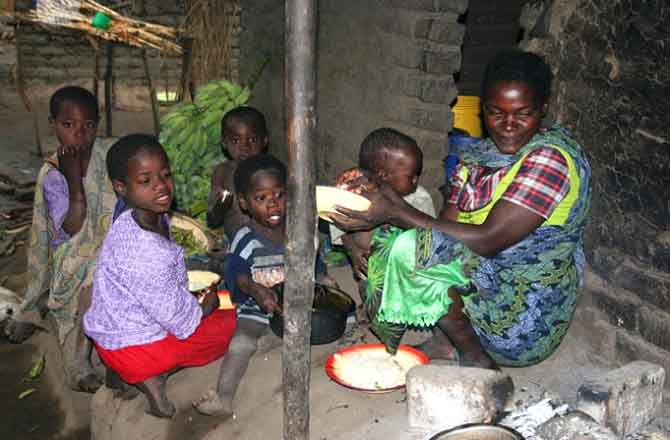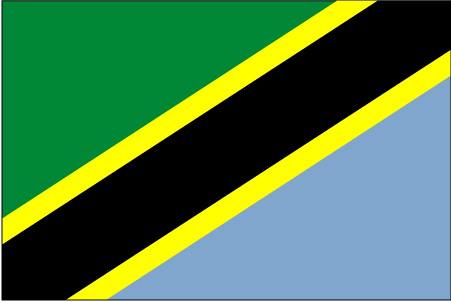The tropical September heat took one of its savage waves on Malawi’s southern lakeshore area of Makanjila in Mangochi district forcing 49 year old Lifa Wile to sag under the shade of a palm tree, 20 metres away from his destination, Mkwanda Health Post. His feet, biting after a two kilometre long travel on foot as it also succumbed to the burning side effects of Stavudine, an ingredient of the first line anti retroviral therapy treatment regimen prescribed to tame the human immunodeficiency virus that was detected in his body some two years ago, could not take him any further.
Defeated, Lifa says he had sent his wife, Gertrude, to collect the life prolonging drug from the health post, which operates once a week, on Wednesdays, by a volunteer clinical officer Patrick Msosa who works for Madina Social Services. Lifa says Msosa had single-handedly negotiated with the owner of the house to open a health post since the nearest public health facility, Makanjila Health Centre, is situated 36 kilometres away.
He says the other facility, Lulanga Health Centre, which is six kilometres away, is privately owned and as such charged fees for the villagers in this remote rural setting to access health care. “Most of the residents here have since time immemorial depended on fishing in Lake Malawi as a source of income but due to the dwindling catches in recent years caused by human over population and climate change the trade is no longer as lucrative as it used to be,” he says with a drooping face adding that as a result villagers can hardly afford medical services at Lulanga Health Centre let alone travel to Makanjila, where a one way journey costs about MK1, 000, an equivalent of US$3 on a hired push bike. Unfortunately encountering a push bike is also a rare treat in this part of the world. But lady luck smile at Lifa and many more who experience his predicament over the ART effects as last week President Joyce Banda directed that all hospitals in Malawi stop administering ART drugs laced with Stavudine because of the toxic effect they have on patients. She urged doctors to adhere to the World Health Organisation (WHO) recommended regimen. Lifa laments that for more complex medical conditions a person has to travel to Mangochi District Hospital, 142 kilometres away or hire a boat through the lake at about MK2, 000 or US$6 to Senga Bay in neighbouring Salima district. In a nearby village, Mary Mdala, is struggling to wrestle off the stigma and discrimination associated with her health condition where her vagina constantly without restraint leaks urine. The condition called obstetric fistula, is an injury to the pelvic organs that occurs when a woman experiences a long a obstructed labour. According to UNFPA, a UN reproductive health agency, during the second stage of labor, the baby’s head presses the soft tissue of the vagina against the bones of the pelvis resulting in an abnormal opening between the vagina and bladder or between the vagina and rectum.
This opening, the fistula, causes constant leaking of urine or feces out of the vagina. “Despite the fact that the condition is preventable and treatable, it still affects many women in developing countries every year, yet has been eradicated in developed countries, says the UN agency. The World Health Organisation (WHO) estimates that there are between 2 million and 3.5 million women suffering with obstetric fistula in the developing world. The Malawi College of Medicine says Malawi has not collected sufficient national obstetric fistula prevalence data but indicate that the country’s 2004 Demographic and Health Survey (DHS), for the first time sought information on the conditions prevalence. “An analysis of the 2004 DHS data found a lifetime prevalence of 4.7 per cent and a crude incidence rate of 15.6 per 1000 live births,” says a study by the college adding that data from the same 2004 Malawi DHS estimated a 20 per cent prevalence rate for complications after delivery and that obstetric fistula cases account for 2 per cent of all deliveries. “A high prevalence of cases were reported in the Southern region (1.9 per cent ) and among the rural sites in Malawi, Mangochi district ranking highest at 2.7 per cent ,” it says explaining that another study reported that there were 29 patients (7.6 per cent) with a combined urogenital and recto-vaginal fistula. “Obstructed labor was the cause of about 379 fistulas and the remaining 29 were not of obstetric origin,” says the college attributing the problem to the many barriers that the women face before they are able to be seen at health facilities. “It is highly likely that most fistula cases remain undetected in the community and that the burden is far greater than has been estimated. Information on the prevalence of fistula in Malawi is important as it would indicate the actual extent to which the obstetric services are failing to meet the needs of pregnant women in the country”. Mary does not know how old she is but looks to be about nineteen or twenty.
She has never been to school because her area is not serviced with the luxury of education. The only form of education she has gone through is the Islamic Madras, where she was taught the principal tenets of the Islamic faith through the study of the Holy Q’uran and the Hadith, the life of Prophet Muhammed. Islam is the prominent religion in Makanjila brought by the Arab slave traders in the 16th century. Mary was once married but the husband left her before she gave birth to her first baby who caused her fistula condition. Like Mary, many women across the country continue to suffer from child bearing because of the long distances they have to travel to access medical care. Henry Chimbale, the Ministry of Health official spokesperson says government understands the issue about distances patients have to undertake to reach health facilities and as such has devised a plan to train post secondary school educated young Malawians in community midwifery for a period of 18 months. “The approach will address the issue of distance as well as reduce maternal mortality to 675 from 984 per 100, 000 live births,” he says adding that it will increase the access to the prevention of mother to child transmission (PMCT) of HIV, an intervention not found among traditional birth attendants who conduct home based child deliveries services in the absence of health facilities. However, with the lack of formal education in most women in Mary’s home area and other parts of the country, marriage and child bearing is considered the best gate way to a better life and what more with lack of facilities to motivate young health workers to work in rural settings such Mary’s area as community based health facilitators.
A 2008 national census established that the country’s average total fertility rate stood at six children, one of the highest in the world. The National Statistical Office (NSO) says that among the major contributing factors to the high fertility rates are adolescent fertility rates. The census showed that Malawi’s population is largely youth, with a median age of 17 years implying that more young people are entering the reproductive age group. Adolescent (aged 15 – 19) constitute 9.7 per cent of the total population of Malawi and the census showed that for every 1, 000 women aged 15 – 19 there were 193 births, says the NSO explaining that high adolescent fertility rates imply higher school drop out rates among girls, higher cases of complications during pregnancy, higher mortality rates and higher levels of infant and childhood illness and mortality. The Statistical Office concluded that in respect of the total population aged 12 years and over, for every 1, 000 persons, 575 are married with more girls entering marriage than boys. Malawi is one of the poorest countries in the world ranked 171 out of 187 countries on the United Nations Human Development Index with approximately 85 per cent of the population living in the rural areas and subsiding on rain fed agriculture. According to the Malawi Poverty and Vulnerability Assessment of 2007, about 56 per cent of the rural population lived in poverty as compared to about 25 per cent who resided in urban areas.



.jpeg&w=60&q=100&h=60)








